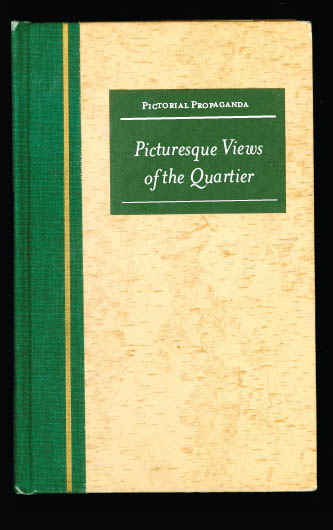What might appear as contradictory, that is, the fact that economic globalization seems to be accompanied by an increase of cultural divisions, is only so on the surface. It is a fact that, in a world where exchanges of goods and ideas are more and more frequent on an international level, people are increasingly aware of the unique characteristics of their own local cultures. Similarly, and it is particularly obvious in the European Union, the disappearance of the old national borders when it comes to goods and persons, has made the artificiality of these borders very clear: the creation of national identities — a recent phenomenon after all — and the political desire to brand and localize them within artificial boundaries has far too often very little to do with any sense of local belonging. It is not possible to differentiate clearly the elements of local cultures from those of national cultures: if the local culture is made up, for instance, of elements like the language we use with family and close friends, as well as the type of food or clothing one is used to wearing, the national culture is made up, for example, of historical events and stories often associated to the ‘nation-building’ movements of the past.” — Frank Vigneron, “On the occasion of the 10th anniversary of the handover …” Asia Art Archive News Letter 7 June (2007). (Accessed June 20th 2007)
Archive for June, 2007
The creation of national identities
Posted in Économie / Economy, Bibliographie / Bibliography, Culture, Nature humaine / Human nature on June 20, 2007|
Economic laws appear to be like natural laws
Posted in Économie / Economy, Bibliographie / Bibliography, Nature humaine / Human nature on June 20, 2007|
Economic laws appear “to be like natural laws, that they are not made by man to regulate free acts of exchange but are functions of the productive conditions of society as a whole where all activities are leveled down to the human body’s metabolism with nature and where no exchange exists but only consumption” — Hannah Arendt, The Human Condition. (Chicago : University of Chicago Press, 1958), 209 quoted in Kieran Bonner, ” Understanding Placemaking : Economics, Politics and Everyday Life in the Culture of Cities,” Canadian Journal of Urban Research 11, no 1 (2002), 2.
The romantic inclination of English gentlemen
Posted in Bibliographie / Bibliography, Nature humaine / Human nature, Paysage / Landscape on June 19, 2007|
The topographical views of military officers were in fact simply one manifestation of the romantic inclination of English gentlemen of the later eighteenth century to delight in the splendours of natural scenery or anything they found in their travels that was charmingly primitive, rough, quaint, or exotic — in a word picturesque. — Dennis Reid. A Concise History of Canadian Painting. 2nd ed. (Toronto : Oxford University Press, 1988), 19.
La beauté des paysages de Charlevoix
Posted in Économie / Economy, Beauté / Beauty, Bibliographie / Bibliography, Nature humaine / Human nature, Paysage / Landscape on June 12, 2007|
A vrai dire la beauté des paysages de Charlevoix n’est perçu que par les premiers visiteurs anglophones vers le milieu du XIXe siècle… Quand, à partir de 1844, un service de vapeurs permet d’amener tous les jeudis les voyageurs de la ville de Québec… Charlevoix change de vocation. Le comté devient un haut lieu touristique, au climat salubre, où l’on peut prendre des bains de mer … «Peu d’endroits au Canada soutiennent la comparaison pour la beauté du paysage», proclament les guides touristiques… La beauté du compté du Charlevoix était donc née, fille improbable du choléra de 1832 et de l’industrie touristique naissante!” — François-Marc Gagnon. Charlevoix : Une histoire d’art 1900-1940. Baie-Saint-Paul : Centre d’exposition de Baie-Saint-Paul, 1994, p 7-8.
Seeing the world in terms of ourselves
Posted in Bibliographie / Bibliography, Environnement / Environment, Nature humaine / Human nature, Paysage / Landscape on June 8, 2007|
When I was a child, I knew no more about nature than a squirrel. If someone had asked me what nature was, I would probably have said that it was my family’s farm, the woods especially and the creek that flooded every spring. Nature was space and the wild things in it, like the geese that flew overhead.” — George Gessert, “Gathered from Coincidence : Reflections on Art in a Time of Global Warming” Leonardo 40, no. 3 (2007) p.231
The imaginary and the symbolic
Posted in Bibliographie / Bibliography, Environnement / Environment, Nature humaine / Human nature, Paysage / Landscape on June 3, 2007|

Landscape does not exist in nature without the eye which grasps an expanse of land as a landscape. Climate’s existence is similar… Climate is thus a multidimentional phenomenon in which are combined the contributions of nature, culture, history and geography, but also the imaginary and the symbolic.” — Julien Knebusch. “The Perception of Climate Change” Leonardo 40, no.2 (2007) p.113
I’ll be back at the Marché Atwater / Atwater Market in June and July, and at the 25e SYMPOSIUM international d’art contemporain de BAIE-SAINT-PAUL in August.
Venez me rencontrer…
